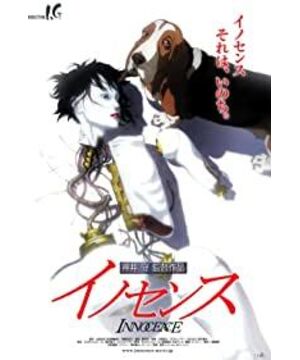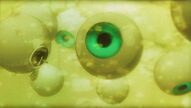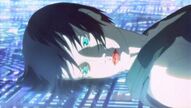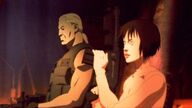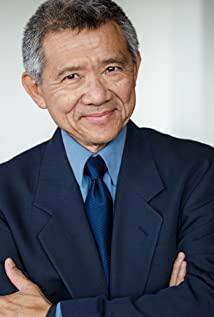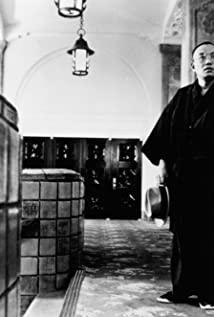Ghost in the Shell innocent
It may be that 95 brought Oshii Mamoru unprecedented success. In 2004, he let go and patted the sequel innocent. In this time of innocence, Mamoru Oshii put aside the pleasing audience, and he made an obscure and incomprehensible movie with extreme and almost dazzling pictures and lens language. Compared with 1995's first "Ghost in the Shell", he explored the margins of Oshii's philosophical view in a light-hearted manner. In his innocence, he more comprehensively deepened the most important philosophical view surrounding "Ghost in the Shell" itself. In the process of telling philosophy for a long time, the dismantling of the plot is similar to the fragmented puppets in the plot. Therefore, the viewing threshold of innocence is very low in a sense: it has the most gorgeous picture performance and moving mirrors, and Kenji Kawai's superb soundtrack is really first-class in audio-visual effects. On the other hand, if you only stay on the surface sound and picture, the viewing experience is likely to be just a boring movie that is good but incomprehensible.
Regarding the sound and picture performance of innocence, compared with 1995, there has been a great improvement. In 2004, it was able to have such outstanding picture quality and fluency, and the details were pulled to the extreme, and in 2020, it is no less. The overall color tone of Innocence is very dazzling and gorgeous, the overall color matching is a kind of eerie gorgeousness, and the colors are very bold and eye-catching. Telling the story with an oil painting-like texture shows that the story itself is surrounded by a mysterious atmosphere. Coupled with a considerable degree of violent scenes, the overall look and feel has been improved to a higher level. Famous scenes such as the parade scene with a Chinese style when the puppet ballads sounded in the film, as well as the picture of the cyberpunk-style city borrowed from Hong Kong, and the high-rise buildings when overlooking the Far East city group from a high altitude, the atmosphere is depressing, but accompanied by Orange dim background light. There are many such scenes, not only the bright colors and strong contrasting colors, but also the scene design and composition are excellent, and each one can be used as a separate screenshot.
In terms of character design, the most outstanding is the design of the dolls. I personally feel that the image of the doll is deliberately shaped into a humanoid with an uncanny valley effect, such as pale nudes, short neutral hair (it feels like a major), and the details of the doll's green eyes and bright red lips clash. In many respects, it gives an unacceptable impression. The dismantling and combination of the puppets in the title should be based on the 95 version, and 3D elements have been added as a whole, which looks more realistic and shocking. The film uses a lot of 3D technology, which is very effective in some specific scenes, especially the 3D effect on the mechanical aspect is very good. The use of appropriate 3D in the battle scene can enhance the sense of strike: such as the kicks of the puppets in the final puppet battle, hand knives and other actions, the shots are very impactful. It can also play a role in the rendering atmosphere of some large environments, such as the description of the villa in the forest and the interior scene of the villa. Through the smooth mirroring and the 3D effect, it gives a comprehensive and profound impression.
The innocence has achieved the ultimate in the details of the picture, and it is also very particular about the movement of some specific plots. Let’s talk about the details first. There are many details in this work, such as the scene of Bart shooting a doll at the beginning. By peeling off and dismembering parts of the doll to present the detailed picture, it achieves a very shocking effect. There is also the drawing of the background scene, which I will not repeat here. Including many battle scenes, there is a very amazing level of detail and smoothness, giving people a hearty thrill. What I am more impressed with is that when the puppet possessed by the element finally pulls the control valve, the arm of the puppet breaks off with force. The detailed description of the tearing of the whole arm is very tense. similar performance. The detailed handling of this point also deepens the portrayal of the theme of Attack in the Shell to a certain extent.
Regarding the lens, I am not a professional, I can only write casually what I can observe personally. The first is the frequent occurrence of "spherical" shots, whether it is a human perspective, a dog or the glass ball that appeared later, a feeling of being enlarged, distorted and looking down is very interesting. I speculate that it should be shot from a "god" or "ghost" perspective, which is also in line with the theme. Secondly, there are often very abrupt and isolated pictures, which create a somewhat confusing, rather mysterious and mysterious atmosphere through rapid cuts and flashes. This wide-angle panorama can also reflect a very grand feeling. In terms of lens language, I think the ultimate scene is the lens performance of the villa in the forest. By superimposing three layers of the plot, the lens is progressive, not only the switching is accelerated, but also the perspective of each shooting is different, giving people the feeling of being from the villa. It is very interesting to spy on the actions of Togusa from all directions.
Regarding music, the most famous one is Puppet Ballad. There are countless REMIX versions of this song, running through the two works of 95-04, and there are different versions in the long shots that both works. I personally prefer version 2.0 a bit. There is a lot of popular science in the comments of this song on the Internet. I will briefly repeat it. This song generally combines the melody of ancient Japanese folk songs, and the whole sound is so mysterious and mysterious. Apart from this famous puppet ballad, I have two other favorite songs in Innocence. One is River of crystals, a rather blues-inspired ballad used in Bart feeding the dog at night. A song that covers Bart's indescribable loneliness and loneliness, as well as his deep affection for Motoko, is very touching. The second is Follow me, which is the ending song of innocence. My personal understanding is to sing from the perspective of the prime minister. The whole song is very soft and soothing, with a sense of otherworldliness. It is both affectionate and ruthless, and the lyrics are also beautiful. It is quite suitable as the ending song.
More to say about the plot and philosophies of Innocence. Here we must first explain the basic philosophy of the two films of Ghost in the Shell: the dualism of soul and body. The spirit is the GHOST, and the flesh is the body. Through the introduction of prosthetics, Kaitou "forces" to think deeply about such a philosophical point of view, what is human, what is life, and what is death? In the first part 95, Motoko Kusanagi finally merged with the magician and disappeared into the electronic ocean, which led to the prelude of thinking. In Innocence, it deepened the structure of this system through a large number of dialogues and literary quotations.
The plot of this work is very simple. It takes the dolls that can kill humans as clues, and leads to mass-selling sex dolls through a very fragmented narrative. By kidnapping real girls and copying GHOST, the dolls are more attractive, but because of GHOST, the story of killing people. To be honest, this incident is just a gimmicky criminal investigation film based on normal narrative logic, but the essence of the attack is not a shallow story. To understand innocence, you must have a deeper understanding of the concept of GHOST. There are some differences from the meaning of the soul in common understanding. GHOST is more inclined to a human essence, a logical operation mode, a unique internal structure of the so-called human beings. GHOST is the meaning of human existence, as long as there is GHOST, it can be called human, so it is also a kind of dualism of spirit and flesh. There is a limit to meat, and with the advancement of science and technology, it can be broken through the transformation of prosthetic body. The brain has a limit. With the advancement of science and technology, the limit can be broken through the transformation of the electronic brain. When the body and brain are completely replaced by machines, is it still human? Even the most extreme example is given in 95: Motoko who dives into the electronic ocean without even a body, is she still human? From the performance of the play, Motoko is more like a kind of existence close to God than a human being. She abandoned ordinary people's joys and sorrows, and also broke through the boundaries of time and space, and Motoko Kusanagi became an eternal and illusory existence. In Innocence, this idea is discussed more deeply, that the dolls are given a copy of GHOST, are they human? There should be no difference between such a puppet and a human, so it should be a human being to completely transform oneself into a puppet... The logic advances step by step, wrapping the audience into a loop.
The answer is actually very simple, which is exactly the meaning of the puppet ballad and the very famous sentence "Life and death, the shed head puppet. Regardless of the mode of existence, even a puppet, life and death are actually very close. The first line is a kind of fragility, and existence is the meaning of fragility, and no matter what form of carrying it is used, it will eventually perish. Life and death are the same as puppets and human beings, because they will eventually face destruction and there is no eternal existence. This answer transcends the rigidity of the general form of existence, directs the focus from the contradiction of the definition of human beings to the discussion of the question of life and death, and even rises to the height of an existential philosophy. As for a "person" like a pixel, I am willing to name it "God", her existence should have been sublimated to a god in the film series of Attack in the Shell. And when God came to the world, with the help of a puppet, she was originally only a human being... The three very cleverly formed a whole, a whole of the theory of the philosophy of human existence.
The discussion of life and death has risen to the realm of existence and destruction, which is very difficult to reach. In the film, "The blood of the sparrow is pitiful, the fish hurts no one to ask, and those who have a voice are fortunate." It is a sad cry that the doll also has a GHOST, but because the mechanical identity cannot be recognized, and is dissent, "No desire, no desire, Ruo Lin. "The Elephant in the Middle" is a description of the mental state of Motoko Kusanagi and Bart who touches this part a little. "Blame the mirror even though his face is distorted" is the censure of human beings who have visions of puppets. Death"... These sentences are all quotes from many famous works, and by combining them in this way, it is enough to piece together the words that can give a glimpse of the mystery.
About the characterization in Innocent in the end. Not much, but very essential. Mamoru Oshii sublimated the grand theme of human beings through these few warm feelings, whether it was Bart's thoughts of feeding the dog at night, or the coat that Bart put on the doll after meeting with Motoko, or the doll that Togusa saw his daughter gave away ... The reason why people are human is not completely understandable by GHOST in the form of logic. Regarding feelings, the overall cold machinery brings a thin warmth, which makes people sigh, this is nothing wrong with human beings. Even if Suzi becomes a "god" and sings FOLLOW ME in the ED, that tenderness has warmth. The entanglement between the physical and the mechanical is meaningless. The female forensic doctor once said that the biggest dream of the dolls is to take care of children, a kind of maternal instinct. This series of emotional surges is the finishing touch to the final sublimation.
View more about Ghost in the Shell 2: Innocence reviews


